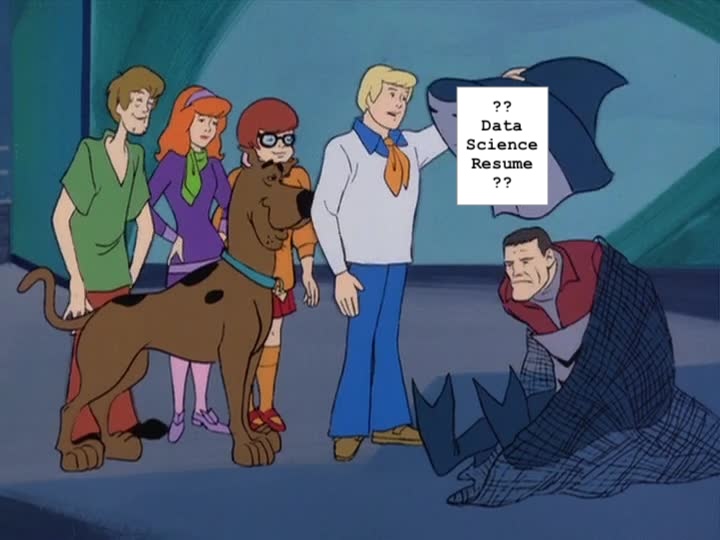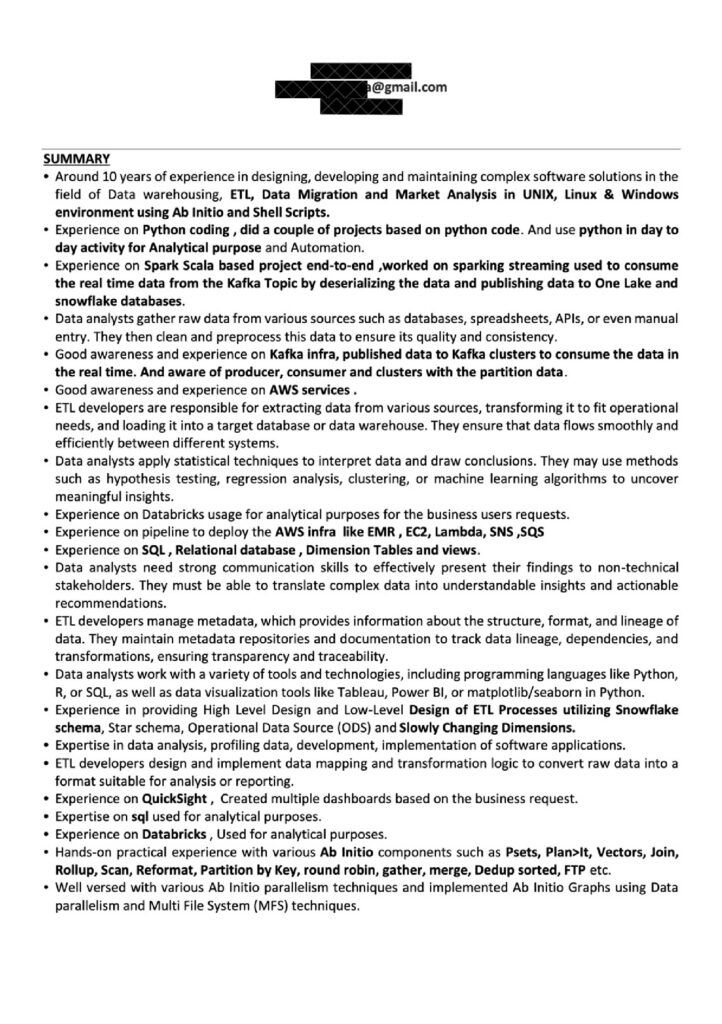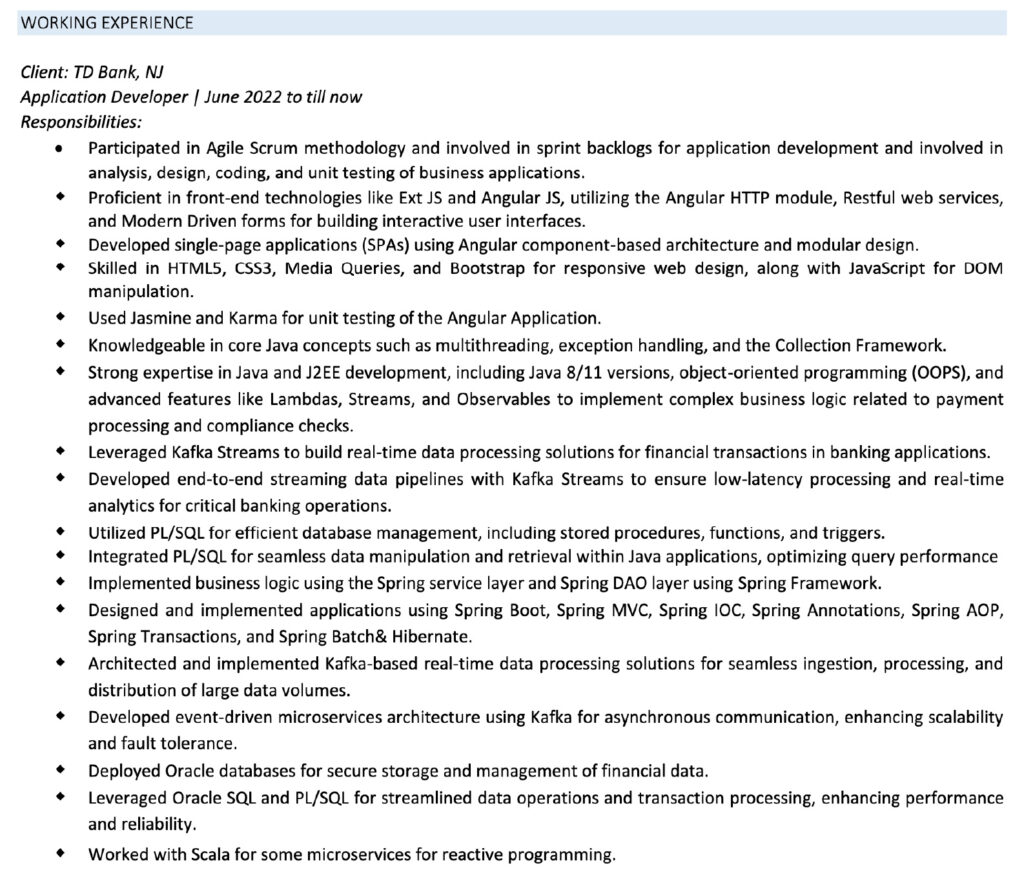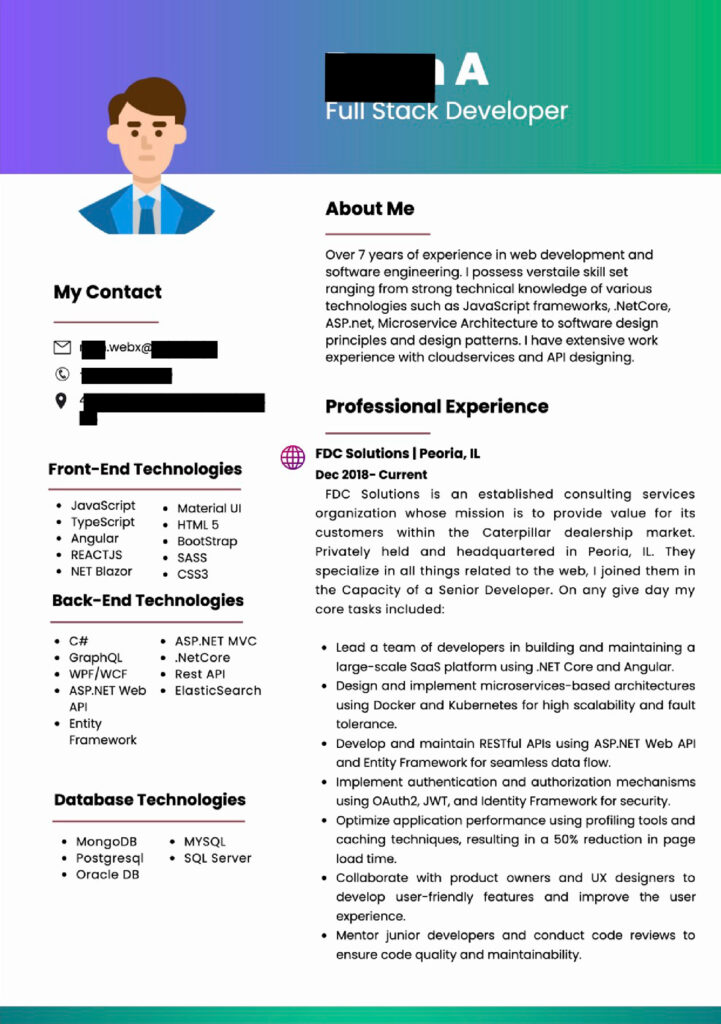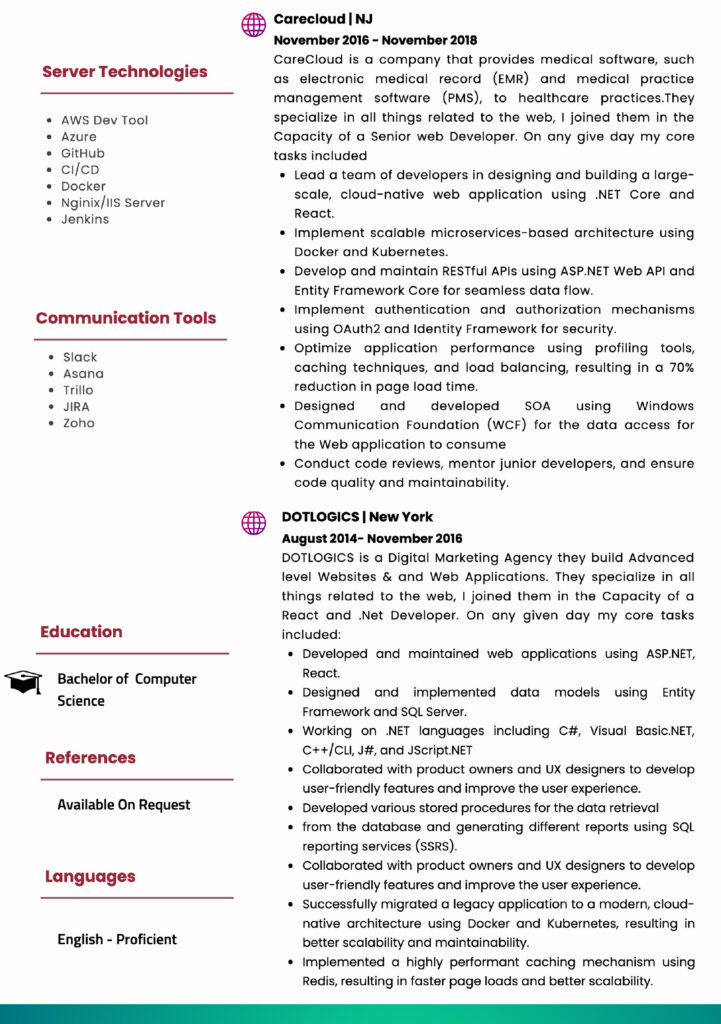Recruiting for data science roles in the digital era is not for the faint of heart. Over the past couple of decades, resume fraud has grown distressingly ubiquitous. With so many recruiters relying (perhaps a bit too heavily) on applicant tracking systems (ATS) to screen candidates, unscrupulous job seekers have adapted, using techniques, such as keyword stuffing, to game the system. The results are overwrought resumes that are not designed to be read by actual humans. In fact, we’ve had many new clients turn to us because of the sheer volume of illegitimate resumes they were having to wade through, often provided to them by another agency.
To tackle the problem, Dataspace recruiters resort to an admittedly low-tech technique: we actually read every single resume we receive for a role. Generally, we’re not dealing with masterminds of deception here. Most fraudulent resumes are pretty easy to spot, once you know what to look for.
Think you’ve got what it takes to identify a fake resume? Our recruiters picked out some recent doozies for you to test your BS-sniffing abilities.
Can you detect the fraud in these data science resumes?
What you’re about to read is real. Only the names have been hidden so as not to embarrass anyone.
Below are four examples of resume fraud, taken directly from real applications we received at Dataspace. Read each one carefully and see if you can tell what makes them questionable.
1. Beefed up skills (with no meat).
A lot of data science job applicants seem to believe it’s important to have as many bullet points as possible on a resume. As recruiters, we beg to differ. The “skills” section on many resumes has become a dumping ground for listing any and every technology the candidate has ever touched. While we certainly recommend highlighting competencies toward the top of a resume, candidates should focus on their core strengths that are relevant to the role.
Here’s the first page of a resume we received for a data engineer role. Right from the start you can see there are way too many skills listed—they take up the entire first page (and actually spill over onto the second). But look a bit closer; see if you can find anything else wrong with the items on the list.
Click image to enlarge.
Answer: Several of the bulleted “skills” are just generic definitions of data-related roles. You may wonder why a candidate would add these to a resume when they already have so (too) many skills. The answer is usually keyword stuffing. ATSs are frequently fooled by keywords if they appear in the context of a reasonably relevant sentence.
2. Bullets that are actually a smoking gun.
Similar to the skills section, candidates also seem to believe that more is always more when it comes to describing their work experience. On the contrary, we recommend candidates use 4 – 7 well-crafted bullet points to describe what they actually did in the role. Resumes with lengthy bulleted job duties are almost guaranteed to set off our Scooby senses.
Here’s a blurb from the work experience section of a resume we received for an application developer position. See if you can pick out which bullets made us question this person’s experience.
Click image to enlarge.
Answer: This example is a bit more subtle than the first, but astute readers will note that four of the bullets aren’t actually job responsibilities. While it may seem somewhat minor, practices like this erode trust and are another indication of keyword stuffing. If a candidate is willing to use such misrepresentations, it puts their entire resume in question.
3. One of these answers is not like the others.
Most applications for data science roles include a series of questions for the candidate to answer. Usually, these are designed to provide a more complete understanding of the individual and ensure key requirements of the role are addressed. It’s disheartening how frequently these questions are ignored altogether. But, even applicants who answer them can do more harm than good when they choose to post fraudulent information.
Below are 3 actual answers we received to a question about key strengths for a platform engineer role. See if you can pick out the one that left us shaking our heads.
Click images to enlarge.
A.
B.
C.
Answer: It probably didn’t take too much effort to suss out that answer C was especially problematic. We’re not sure if the candidate was betting on the fact that nobody actually reads anything anymore, or if they simply didn’t realize they needed to fill in the blanks on the sample answer they lifted from somewhere on the web.
4. Um, just no.
Sometimes we see a resume that is so bad, top to bottom, that we are left completely baffled. Case in point is this recent submission for a data engineer role. At first glance, you may think it’s a comparatively sharp-looking resume, concise and well-formatted. But it doesn’t take long for the cracks to start revealing themselves. Besides the fact that the candidate’s name didn’t match the one they put on the application questionnaire, several other items make this resume super red-flaggy. See how many you can spot.
Click images to enlarge
Answer: Here are the elements that made our experienced data science recruiters smash that reject button almost immediately: 1) no last name, only an initial; 2) weirdly generic email also omits last name; 3) work experience wastes a whole lot of space describing each company rather than the role; 4) bullets of job duties are repeated among jobs with minimal changes; 5) no school noted for degree; and 6) what the heck is up with that illustration? (In case you’re wondering, if you want to look professional and authentic, a cartoon depiction of yourself is not the way to go.)
Are you dealing with resumes that look a bit sus?
If you’re a hiring manager who’s fed up with the results you’re getting from your candidate search, we can help. Spend less time filtering through sh#tty resumes and more time talking to great fits for your data science, data analytics, or data engineering role. Contact us today to talk to a recruiter.
And if you’re a job seeker who’s considering use of the less-than-savory tactics illustrated above, JUST SAY NO. Instead, check out our blog post on how to write a great data science resume (and download our data science resume checklist while you’re at it).

